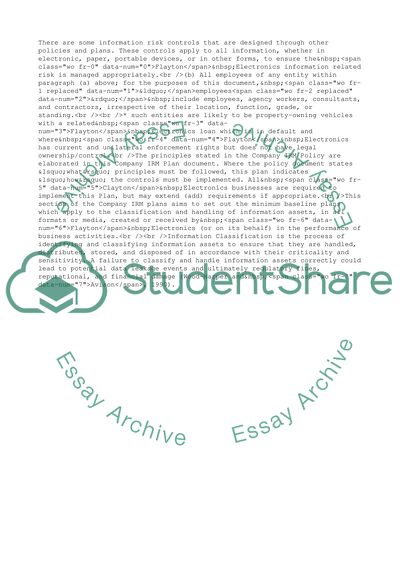Cite this document
(The General Plans of Information Risk Management Assignment Example | Topics and Well Written Essays - 2000 words, n.d.)
The General Plans of Information Risk Management Assignment Example | Topics and Well Written Essays - 2000 words. https://studentshare.org/management/1630495-risk-managment-plan-component
The General Plans of Information Risk Management Assignment Example | Topics and Well Written Essays - 2000 words. https://studentshare.org/management/1630495-risk-managment-plan-component
(The General Plans of Information Risk Management Assignment Example | Topics and Well Written Essays - 2000 Words)
The General Plans of Information Risk Management Assignment Example | Topics and Well Written Essays - 2000 Words. https://studentshare.org/management/1630495-risk-managment-plan-component.
The General Plans of Information Risk Management Assignment Example | Topics and Well Written Essays - 2000 Words. https://studentshare.org/management/1630495-risk-managment-plan-component.
“The General Plans of Information Risk Management Assignment Example | Topics and Well Written Essays - 2000 Words”. https://studentshare.org/management/1630495-risk-managment-plan-component.


